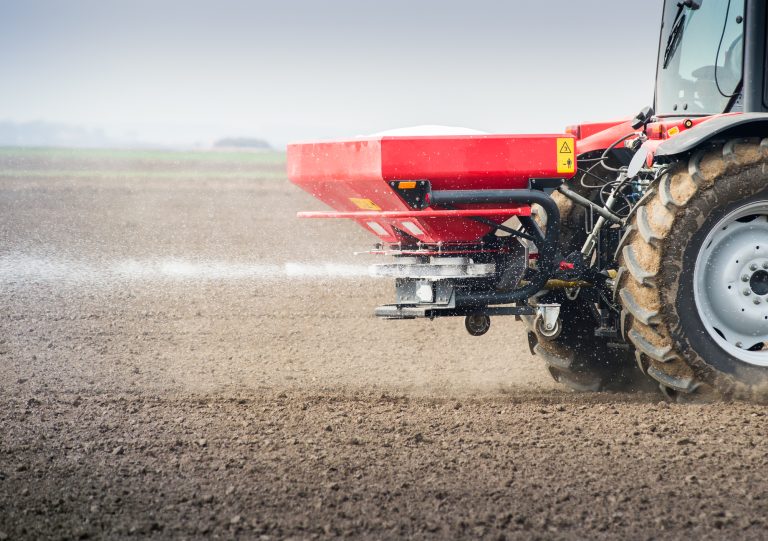There’s no magic formula for crop productivity, but the surest road to healthy and thriving plants is through balanced and appropriate nutrition. Each crop has its specific nutrient needs, and farmers are becoming increasingly conscious of these requirements.
Different crops require various elements in varying quantities. Among these elements, however, there exist ten which are vitally needed for plant growth and health.
Essential nutrients from good quality agriculture fertilizer can make a significant difference in the health and yield of crops. These nutrients can be broadly classified into macronutrients and micronutrients.
Macronutrients
1. Nitrogen (N)
One of the key nutrients for plants, Nitrogen is a major component of amino acids, which are essentials of proteins. Its effectiveness cannot be overstated, as it directly affects the plant’s leafy growth and green color. Nitrogen also forms an integral part of chlorophyll, which is responsible for photosynthesis.
Despite being a readily available element in nature, many plants are unsuccessful in absorbing Nitrogen directly from the atmosphere or soil. The solution lies often in the form of fertilizers that provide the nutrient in the right amounts and forms.
2. Phosphorus (P)
Second in importance only to Nitrogen, Phosphorus is another nutrient that, when deficient, has a significant impact on the plant health. Phosphorus is key in energy transfer and storage in plants. It is a part of the DNA and RNA, the genetic building blocks of all life forms.
Plants utilize phosphorus to turn sunlight into energy during photosynthesis. A lack of this nutrient can stunt plant growth. It is therefore crucial to use a suitable agriculture fertilizer with a good phosphorus profile from the early stages of plant life.
3. Potassium (K)
Potassium, the last of the primary macronutrients, plays several crucial roles in the plant’s metabolic processes. It aids in the transportation of water, nutrients, and carbohydrates within plant tissue.
Additionally, it fortifies plants and enhances their resistance against diseases, drought, and pests. Hence, it is vital to ensure that your agriculture fertilizer has a high level of potassium.
Secondary Macronutrients
These are nutrients that plants need in slightly lesser quantities than the primary macronutrients. However, their importance is no less vital.
4. Calcium (Ca)
Calcium plays crucial roles in the formation of plant cell walls, thereby ensuring strong and healthy plant growth. It has another significant function – enabling other nutrients to perform their roles in the plant efficiently.
This secondary macronutrient is absorbed through the roots and must be present in the soil in a soluble form. Including an agriculture fertilizer with a good dose of calcium can help improve the structural strength and productivity of the crops.
5. Magnesium (Mg)
Magnesium is a part of the chlorophyll molecule, which means it’s vital for photosynthesis. It also assists with enzyme activation, and it helps in the transportation of phosphorus within plants. If your soil lacks magnesium, your plants might display symptoms of yellowing leaves due to loss of chlorophyll.
By including a quality agriculture fertilizer with sufficient magnesium, you can help boost the greenness and overall health of your crops.
6. Sulfur (S)
Considered the fourth major nutrient after N, P, and K, Sulfur is essential in the formation of amino acids, proteins, and oils. It promotes the production of chlorophyll and aids in the metabolic functions of plants.
Furthermore, Sulfur is necessary for nodule formation on legume roots, which improves Nitrogen fixation. It is vital to have an agriculture fertilizer that is enriched with Sulfur to promote better crop yield.
Micronutrients
Although plants need micronutrients in smaller quantities than macronutrients, they play a crucial role in ensuring the plants perform optimally.
7. Zinc (Zn)
Zinc aids in the synthesis of protein in plants and helps regulate plant growth hormones. These hormones are directly linked to how well plants can withstand environmental stress and poor soil conditions. An adequate supply of Zinc in your agriculture fertilizer can enhance resilience and produce robust and healthy crops.
8. Manganese (Mn)
Manganese plays a direct role in photosynthesis by aiding the process of light absorption. It helps in the utilization of Nitrogen and Phosphorus, enhances the breakdown of carbohydrates, and promotes the production of oxygen from water during photosynthesis.
If plants show symptoms of slow growth and discolored leaves, it could be a sign of a Manganese deficiency. One way to bridge this gap is to ensure your agriculture fertilizer includes sufficient Manganese.
9. Iron (Fe)
Iron is primarily responsible for producing chlorophyll, which gives plants their vibrant green hue and facilitates the process of photosynthesis. Iron also assists in enzyme formation and functions related to energy transfer.
Iron deficiency usually manifests as interveinal chlorosis—where the leaves turn yellow while the veins stay green. An agriculture fertilizer that includes Iron promises to boost chlorophyll production and overall plant health.
10. Copper (Cu)
The last essential nutrient on our list, Copper, plays several significant roles in plant growth. From facilitating photosynthesis and respiration to intensifying flavor and color in fruits and crops—it’s a vital component.
Inadequate Copper can result in yield loss and poor crop quality. Ensure your agriculture fertilizer includes this important nutrient to optimize crop health, quality, and yield.
When selecting a fertilizer, it’s essential to remember the importance of these vital nutrients. An ideal agriculture fertilizer should provide a balanced mix of both primary and secondary macronutrients (NPK, Ca, Mg, S) and essential micronutrients (Zn, Mn, Fe, Cu) to ensure optimal crop health and productivity.
By carefully balancing nutrient levels with a high-quality agriculture fertilizer, farmers and growers can help their crops reach their full potential. Ultimately, this enhances productivity levels, improves quality, and significantly contributes to a robust and sustainable agricultural system.

